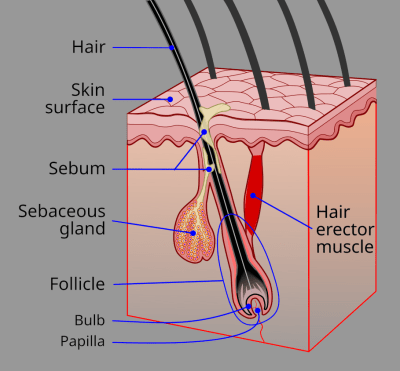
Parkinson’s disease affects millions of people all over the world. The degenerative condition causes characteristic tremors, trouble walking, and often comes with complications including dementia, depression, and anxiety.
One of the major challenges around Parkinson’s disease involves diagnosis. There’s no single, commonly-available test that can confirm or rule out the disease. It’s can cause particular frustration as the disease is most treatable in its early stages.
That may soon change, however. One woman identified that she seemingly had the ability to “smell” the disease in those affected, and is now working with scientists to develop a test for the condition.
Follow Your Nose
The human sense of smell, by and large, isn’t particularly impressive. It helps us enjoy the scent of fresh bread baking in an oven, or the aroma of freshly cut grass. However, as a tool for inspecting and learning about the world around us, it really comes up short.
Some of us, though, are more capable in the olfactory department than others. Joy Milne from Perth, Scotland, is one such person. She happened to detected a change in her partner’s characteristic smell, one day, and twelve years later, they were diagnosed with Parkinson’s disease.
The idea that someone could “smell” a difference with people with Parkinson’s disease is an easy one to test. When Milne eventually put the idea together that the different smell she noticed was perhaps related to her husbands condition, she quickly drew the interest of scientists. With the aid of her partner, a former doctor, she teamed up with researchers Dr. Tilo Kunath and Professor Perdita Barran to investigate further.

The suspicion was that the change in smell may have been due to a chemical difference in sebum, the oily substance the sebaceous glands excrete to the skin. A test was put together wherein Milne was to smell T-shirts worn by various people. Some of the participants had Parkinson’s disease, and some did not. Milne was able to correctly identify the shirts worn by those with the disease. She also detected the characteristic smell on a T-shirt belonging to someone from the group without Parkinson’s. Just eight months later, that individual was also diagnosed with the disease. It served as a resounding indication that there may be a detectable chemical signature of Parkinson’s disease.
After years of research, a group of researchers led by Barran have developed a simple test for the disease. A sample is taken by swabbing a cotton bud on the back of the neck. The sample is then analyzed for molecules linked to Parkinson’s disease. It serves as a straightforward clinical tool to help identify patients that may suffer from the condition.
The test works by identifying certain heavy-weight lipid molecules that are only found in people with Parkinson’s disease using mass spectrometry techniques. Currently in early stages of development, the test has been trialled in laboratory settings with success. It has the additional benefit that the swab technique is non-invasive.
Future Work
The next stage is to develop the sebum analysis technique into a simple standardized test that can be run in typical clinical settings, in hospitals and doctor’s clinics around the world. Having the test widely available could be key to early identification of the disease. Milne has demonstrated the ability to smell the change in sebum before clinical symptoms were evident; the test could thus theoretically do the same. Currently, diagnosis with Parkinson’s disease in the UK can take months or years, thanks to the work involved and the backlog of patients in the system. A simple swab test could change that, getting patients to the right specialist help sooner rather than later.
Milne is continuing her work, teaming up with scientists to see if she can identify other diseases by smell. Prime candidates include tuberculosis and cancer. The latter of the two has been found to be detectable by dogs in some cases, so Milne’s own highly-capable nose may be able to achieve the same feat. She occasionally smells the characteristic Parkinson’s signature when out in public, too. However, she has been advised by medical ethics professionals that she cannot advise people of her findings. Milne notes that most general practitioners would discount a patient that came in for tests on the testimony of a woman that smelled that they had a disease, anyway.
The overall development of the swab test shows how effective science can be in testing extraordinary claims. When Milne claimed to have the ability to “smell” Parkinson’s disease, scientists were quickly able to devise a test that confirmed that was the case. From there, they were able to figure out what was happening at a low level, and turn it to real medical benefit. That’s the benefit of the scientific method at work!
0 Commentaires